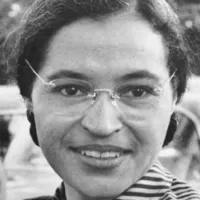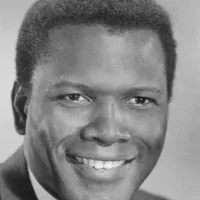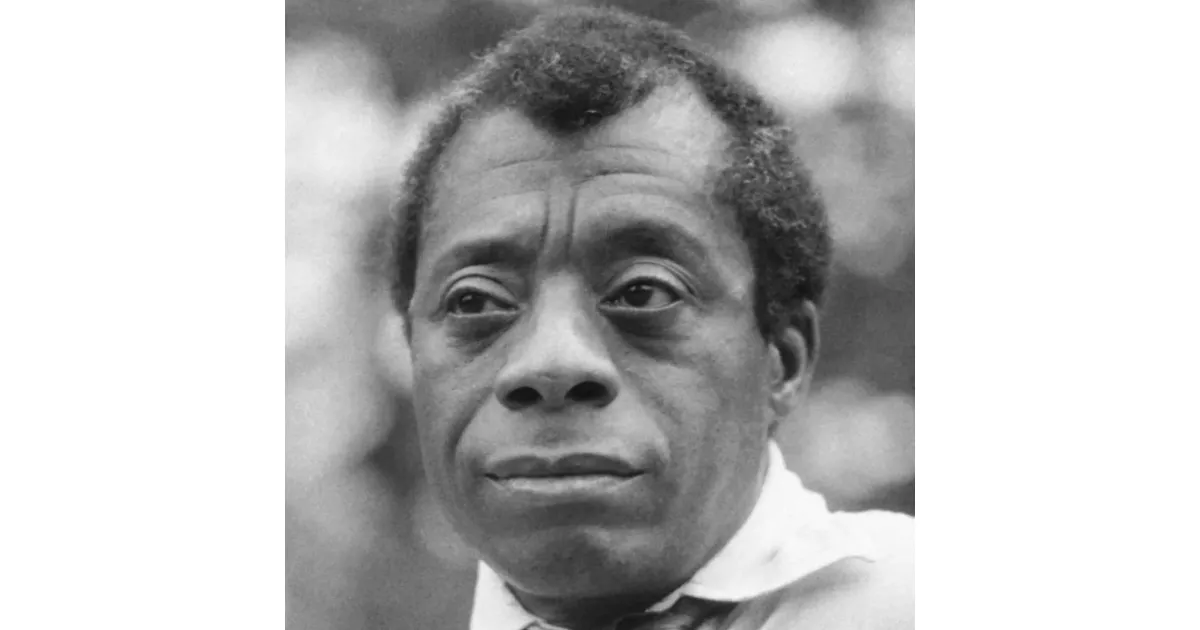Discover the career path of James Baldwin, from the first major opportunity to industry-changing achievements.
James Baldwin was a prominent African-American writer and civil rights activist. Known for his eloquent prose and insightful social commentary, Baldwin's essays, novels, and plays explored themes of race, sexuality, class, and identity in America. His works like "Go Tell It on the Mountain" and "Notes of a Native Son" solidified his place as a major literary figure and a powerful voice during the Civil Rights Movement. Baldwin challenged societal norms and confronted the complexities of the American experience, leaving a lasting impact on literature and the fight for social justice.
1937: Baldwin's First Published Essay
In the autumn of 1937, Baldwin's first published essay, "Harlem—Then and Now", appeared in the Douglass Pilot, after research at the library on 42nd Street.
1938: Baldwin's first attempt at a novel
In 1938, James Baldwin made his first attempt at writing a novel, marking the beginning of years of work that would eventually lead to "Go Tell It on the Mountain".
1940: Wright's Native Son published
Richard Wright's novel "Native Son" was published in 1940. Later, James Baldwin's essay "Notes of a Native Son" and his collection Notes of a Native Son allude to it.
1941: Baldwin Delivered His Final Sermon
In 1941, Baldwin delivered his final sermon at Fireside Pentecostal, realizing his authority as a speaker. He also had a conversation with David Baldwin about his desire to write rather than preach.
1945: Baldwin Met Richard Wright
In 1945, Baldwin met Richard Wright, hoping to get him interested in his manuscript "Crying Holy", which would later become Go Tell It On The Mountain.
1945: Baldwin Started a Literary Magazine
In 1945, Baldwin started a literary magazine called The Generation with Claire Burch.
1947: Baldwin's First Publication in The Nation
In 1947, Baldwin was published for the first time in The Nation, with a review of Maxim Gorki's Best Short Stories.
1947: First published work in The Nation
In 1947, James Baldwin's first published work, a review of the writer Maxim Gorky, appeared in "The Nation".
October 1948: Publication of 'Previous Condition'
In October 1948, Baldwin's first work of fiction, a short story called "Previous Condition", was published in Commentary magazine. The story is about a Black man evicted from his apartment, a metaphor for white society.
1948: Essays published in Commentary, The New Leader, Partisan Review, The Reporter, and Harper's Magazine
Between 1948 and 1955, James Baldwin had essays published in Commentary, The New Leader, Partisan Review, The Reporter, and Harper's Magazine. These essays later formed part of his collection "Notes of a Native Son", published in 1955.
1949: Publication of "Everybody's Protest Novel"
In 1949, Baldwin published "Everybody's Protest Novel", a critique of Richard Wright's work, where Baldwin criticizes protest literature for focusing on theories and categorization of human beings. He uses Wright's Native Son and Stowe's Uncle Tom's Cabin as examples.
1949: Baldwin critiques Wright's Native Son
In 1949, James Baldwin's essay "Everybody's Protest Novel" critiqued Richard Wright's novel "Native Son", arguing that it lacked credible characters and psychological depth, leading to a rift between the two authors. Baldwin later clarified that his intent was not to attack Wright but to gain personal clarity.
1950: Publication of "Equal in Paris"
In 1950, James Baldwin published his essay "Equal in Paris" in Commentary, reflecting on his experience of being arrested and jailed in Paris in December 1949. He wrote about how he was no longer seen as a "despised black man" but simply as an American.
1951: Publication of "Many Thousands Gone"
In 1951, James Baldwin published "Many Thousands Gone," another critique of Richard Wright's work. In these essays, Baldwin argued that white racism towards Black Americans was often a reflection of self-hatred and self-denial.
February 26, 1952: Manuscript of Go Tell It on the Mountain sent to Knopf
On February 26, 1952, James Baldwin sent the manuscript for "Go Tell It on the Mountain" to the Alfred A. Knopf publishing house in New York.
May 1953: Publication of Go Tell It on the Mountain
In May 1953, James Baldwin's novel "Go Tell It on the Mountain" was published. Baldwin set sail back to Europe on August 28.
October 1953: Publication of "Stranger in the Village"
In October 1953, Baldwin's essay "Stranger in the Village" was published in Harper's Magazine. The essay reflected on his experiences with the racial innocence of Swiss villagers during his time in Loèches-les-Bains.
1953: Publication of Go Tell It on the Mountain
In 1953, Baldwin's first novel, "Go Tell It on the Mountain", was published. Prior to this, he wrote several notable works like "The Negro in Paris", "The Preservation of Innocence", "Too Little, Too Late", and "The Death of the Prophet".
May 1954: Supreme Court Orders School Desegregation
In May 1954, the United States Supreme Court ordered schools to desegregate "with all deliberate speed", marking a pivotal moment in the Civil Rights Movement, which Baldwin followed from Paris.
1954: Fellowships and Publication of The Amen Corner
In 1954, James Baldwin accepted a fellowship at the MacDowell writer's colony in New Hampshire and won a Guggenheim Fellowship. Additionally, his three-act play "The Amen Corner" was published that year.
December 1955: Rosa Parks Arrested
In December 1955, Rosa Parks was arrested in Montgomery for refusing to give up her seat on a bus, an event that galvanized the Civil Rights Movement and was followed by Baldwin from Paris.
1955: Publication of Notes of a Native Son
In 1955, James Baldwin's essay collection, "Notes of a Native Son", was published, containing major themes such as searching for self, accepting an inheritance, and claiming a birthright. The essays were previously published between 1948 and 1955.
1955: Review of Carmen Jones published
In 1955, James Baldwin's review of "Carmen Jones" was published in Commentary, where he discussed the significance of an all-Black cast while also critiquing the film's myths about Black sexuality. This review was included in Part One of "Notes of a Native Son".
July 1956: Publication of "The Crusade of Indignation"
In July 1956, Baldwin published "The Crusade of Indignation", in which he critiqued "Uncle Tom's Cabin" for perpetuating a unidimensional characterization of Black Americans.
1956: Publication of 'Giovanni's Room'
In 1956, Baldwin's novel, Giovanni's Room, was published, featuring gay and bisexual men prominently and exploring themes of masculinity, sexuality, race, and class.
1961: Completion of Another Country in Istanbul
On December 10, 1961, James Baldwin completed his novel "Another Country" during his first two-month stay in Istanbul.
1962: Baldwin Publishes "Down at the Cross"
In 1962, Baldwin published the essay "Down at the Cross" in The New Yorker, later published as "Letter from a Region of My Mind". This essay, along with another, later became "The Fire Next Time".
1962: Publication of Another Country
In 1962, James Baldwin published "Another Country", a novel exploring themes of race and sexuality among Black and white characters.
May 17, 1963: Time features Baldwin on its cover
On May 17, 1963, Time magazine featured James Baldwin on its cover, acknowledging his insightful analysis of white racism and his poignant descriptions of the experiences of Black people. Time recognized Baldwin as a writer who expressed the realities of racial issues with remarkable poignancy and abrasiveness.
August 28, 1963: Baldwin appears at the March on Washington
On August 28, 1963, James Baldwin participated in the March on Washington for Jobs and Freedom, alongside Harry Belafonte, Sidney Poitier, and Marlon Brando, marking a significant moment in the Civil Rights Movement.
1963: Publication and Impact of The Fire Next Time
In 1963, Baldwin's essay "Down at the Cross", later titled "The Fire Next Time" in book form, was published, landing him on the cover of Time magazine. He became a spokesperson for civil rights, addressing the relationship between Christianity and the Black Muslim movement.
1963: Baldwin's Lecture Tour of the South
In 1963, James Baldwin conducted a lecture tour of the South for CORE, expressing his racial ideology to students and others, positioned between Malcolm X's "muscular approach" and Martin Luther King Jr.'s nonviolent program.
1964: Baldwin collaborates with Richard Avedon on Nothing Personal
In 1964, James Baldwin collaborated with his childhood friend, photographer Richard Avedon, on the book "Nothing Personal", a project that combined Baldwin's writing with Avedon's photography to explore themes of identity, race, and American society.
March 1965: Baldwin joins marchers from Selma to Montgomery
In March 1965, James Baldwin joined marchers in the Selma to Montgomery Marches, walking 50 miles to the capitol in Montgomery under the protection of federal troops. This participation highlighted Baldwin's commitment to the Civil Rights Movement and his advocacy for federal intervention to protect Black citizens.
1965: Debate with William F. Buckley
In 1965, James Baldwin debated William F. Buckley at the Cambridge Union in the UK, arguing against the proposition that the American dream had been achieved at the expense of African Americans, and overwhelmingly won the vote from the student body.
1965: Publication of 'Going to Meet the Man'
In 1965, five previously published short stories were collected and published in James Baldwin's collection, 'Going to Meet the Man', along with three other stories.
1968: Publication of Tell Me How Long the Train's Been Gone
In 1968, James Baldwin published "Tell Me How Long the Train's Been Gone", an experimental novel dealing with Black and white, heterosexual, gay, and bisexual characters.
November 1970: Baldwin Writes Open Letter to Angela Davis
In November 1970, James Baldwin wrote his famous "Open Letter to My Sister, Angela Y. Davis" in Saint-Paul-de-Vence.
1972: Publication of No Name in the Street
In 1972, Baldwin published "No Name in the Street", an essay reflecting on his experiences in the later 1960s, particularly the assassinations of Medgar Evers, Malcolm X, and Martin Luther King Jr.
1974: Publication of If Beale Street Could Talk
In 1974, Baldwin published "If Beale Street Could Talk", a novel stressing the importance of Black American families.
1979: Publication of Just Above My Head
In 1979, Baldwin published "Just Above My Head", a novel stressing the importance of Black American families.
1979: Baldwin Writes Just Above My Head
In Saint-Paul-de-Vence, James Baldwin wrote "Just Above My Head" in 1979.
1983: Publication of Jimmy's Blues
In 1983, James Baldwin published "Jimmy's Blues", a volume of poetry.
1985: Publication of The Evidence of Things Not Seen
In 1985, James Baldwin published "The Evidence of Things Not Seen", a book-length essay reflecting on race inspired by the Atlanta murders of 1979-1981.
1985: Baldwin Writes Evidence of Things Not Seen
In Saint-Paul-de-Vence, James Baldwin wrote "Evidence of Things Not Seen" in 1985.
1987: Publication of Harlem Quartet
In 1987, James Baldwin's last novel, "Harlem Quartet", was published.
Mentioned in this timeline

Google LLC is a multinational technology company specializing in online...

Martin Luther King Jr was a pivotal leader in the...

Rosa Parks was a pivotal figure in the American Civil...

Harry Belafonte was a prominent American singer actor and civil...

Sidney Poitier was a trailblazing Bahamian-American actor director activist and...

Malcolm X was a prominent African American activist and minister...
Trending

2 months ago Euphoria Season 3: Release date, cast changes, streaming info, and Zendaya's role.

27 days ago Ubisoft's Anno 117 includes AI art placeholder; Fans react negatively.

2 months ago Virginia Vallejo, Pablo Escobar's ex, reveals health struggle: Suffered a brutal stroke.

7 months ago Jake Gyllenhaal's 'Othello' Snubbed by Tony Awards Despite Box Office Success with Denzel Washington.
9 days ago World Cup 2026 Draw: Brazil in Group C, France's Path

Maisie Williams is an English actress who gained widespread recognition for her role as Arya Stark in the HBO series...
Popular

Candace Owens is an American conservative political commentator and author...

Ilhan Omar is an American politician currently serving as the...

XXXTentacion born Jahseh Dwayne Ricardo Onfroy was a controversial yet...

Tom Cotton is an American politician and Army veteran currently...
The Kennedy Center Honors are annual awards recognizing individuals and...

Kelsey Grammer is an accomplished American actor producer and singer...







